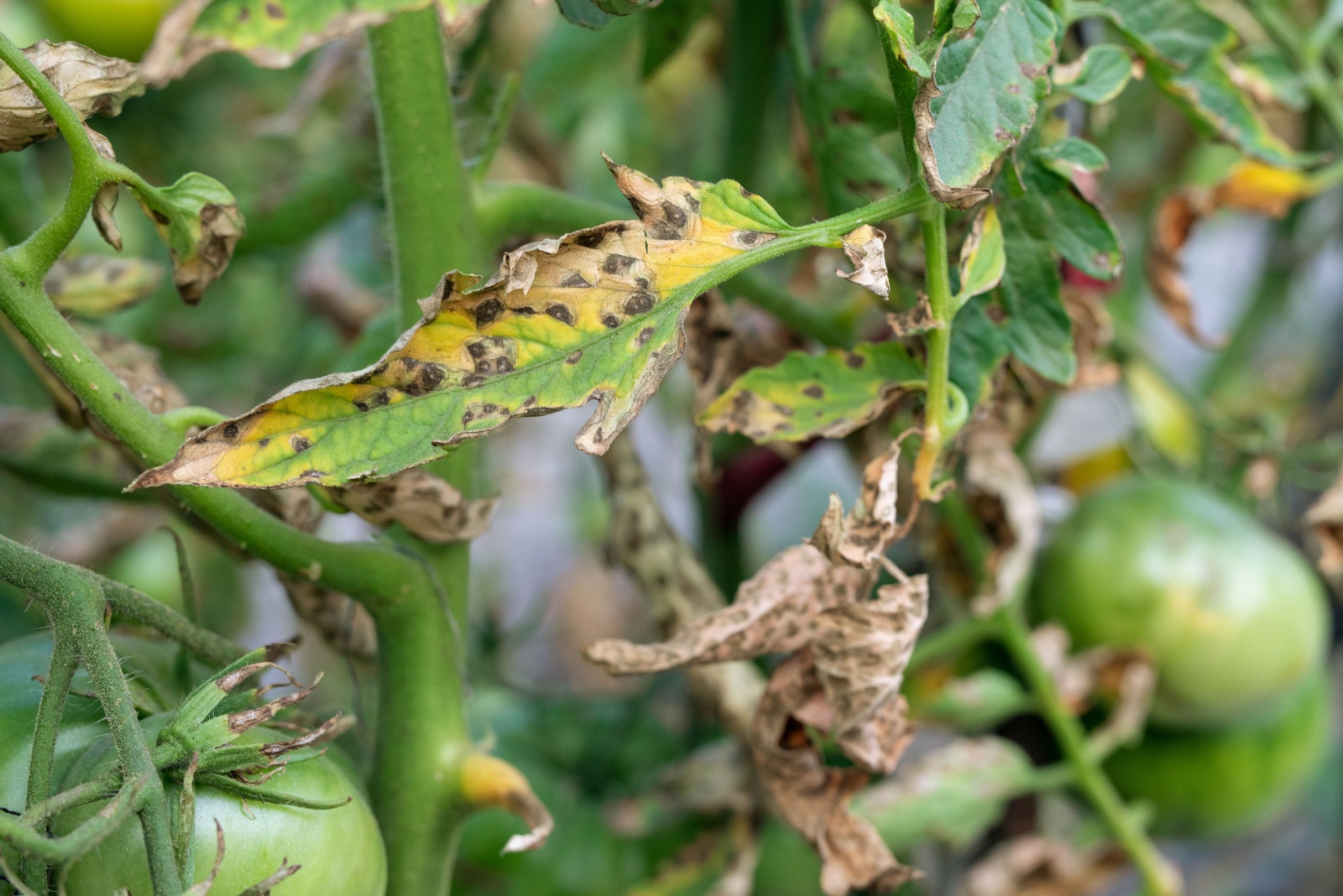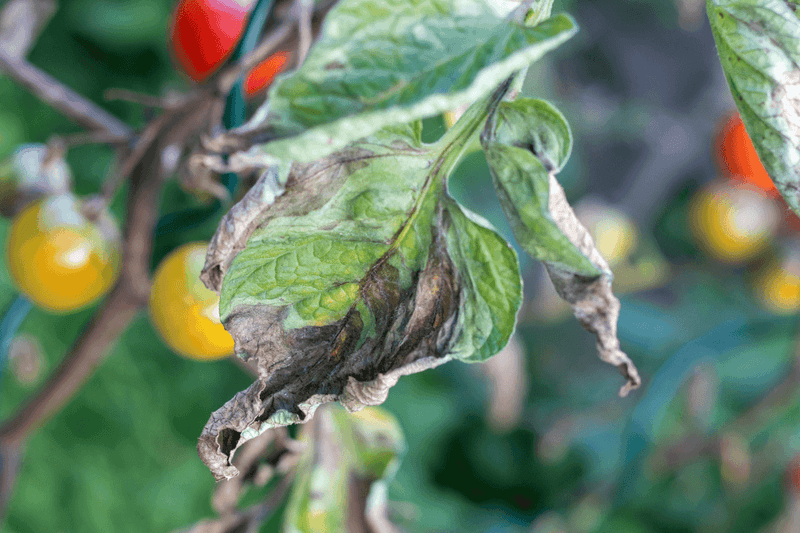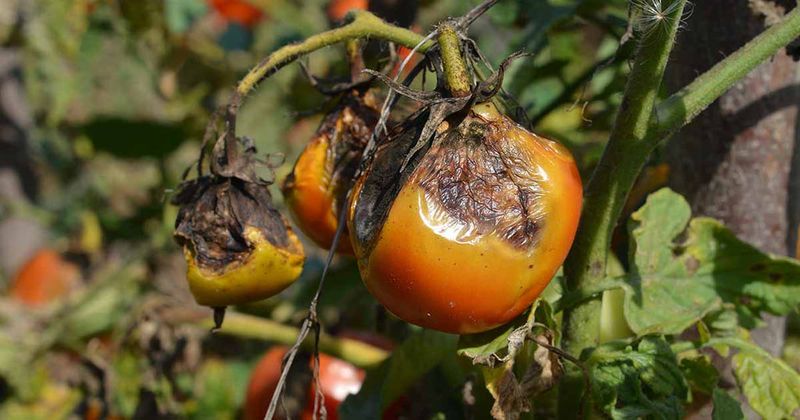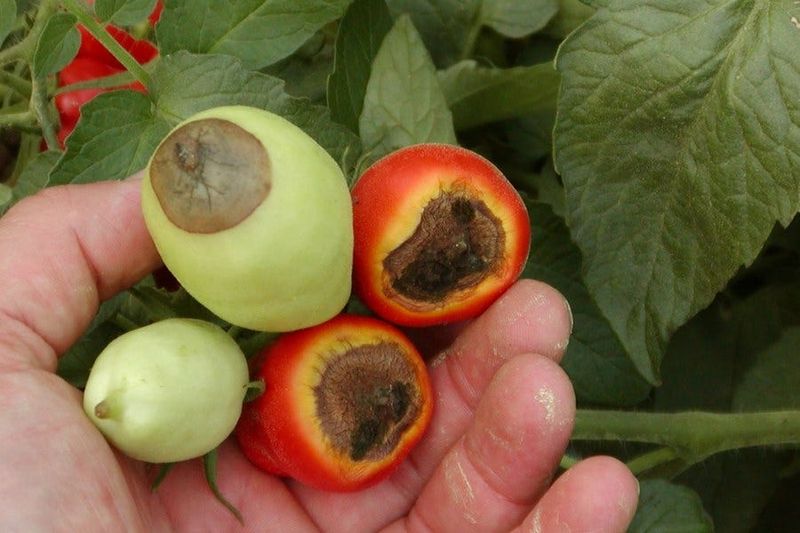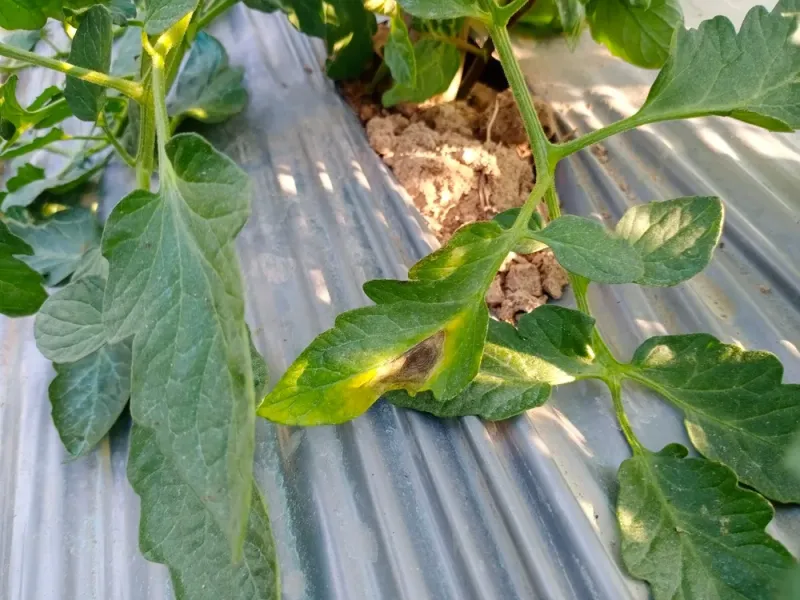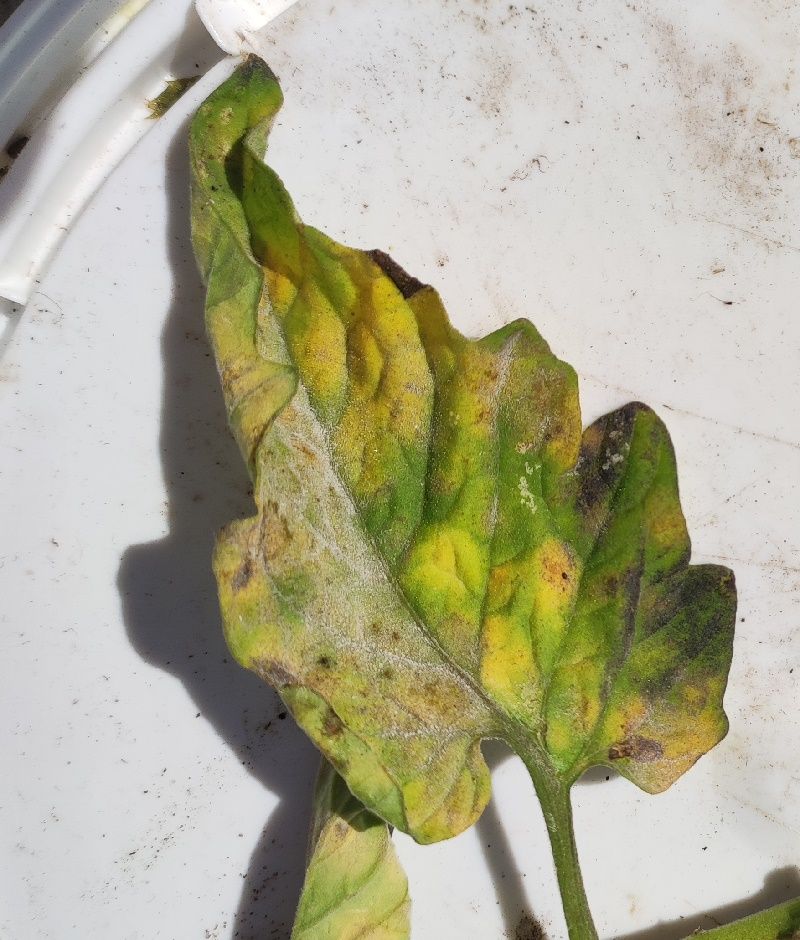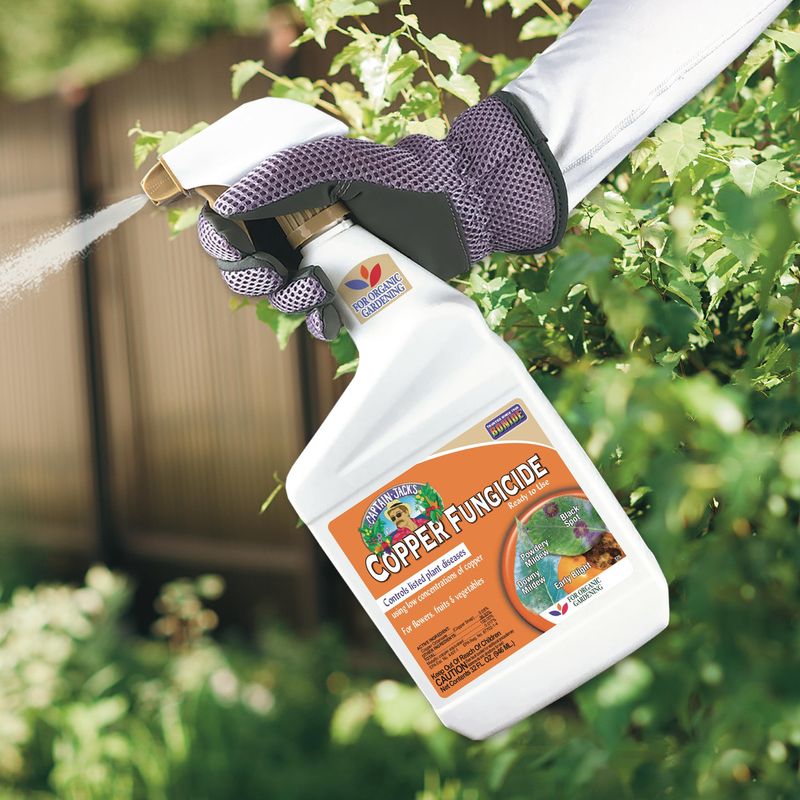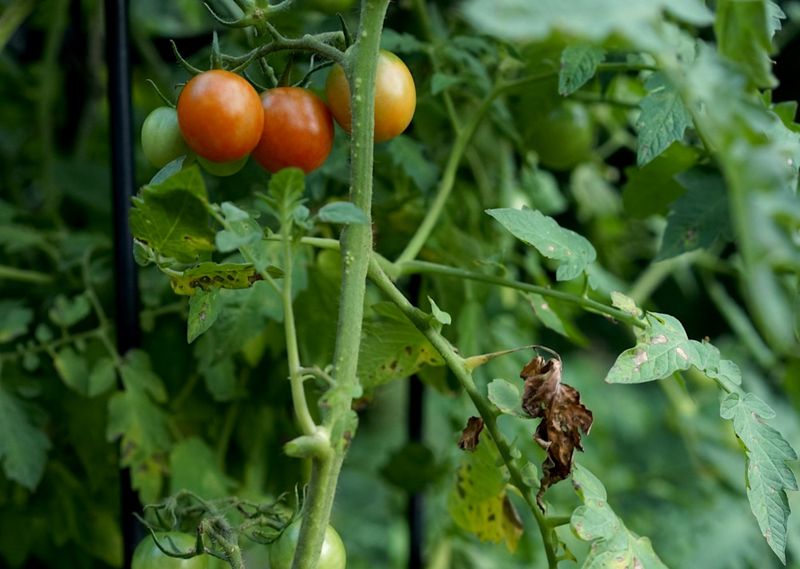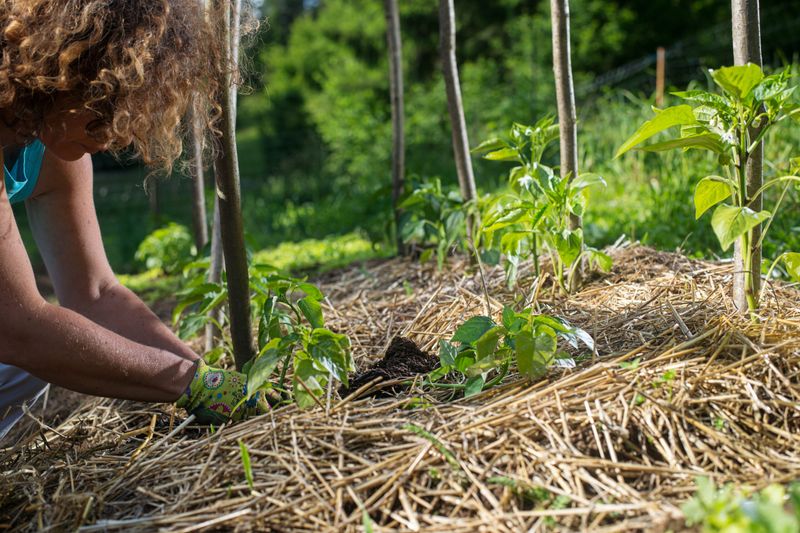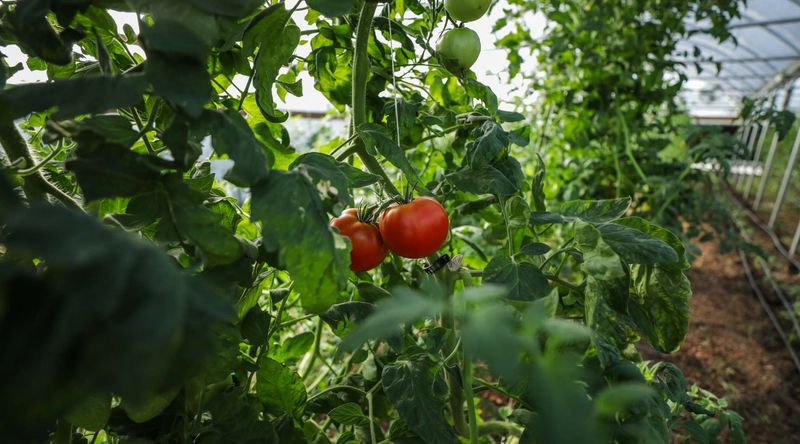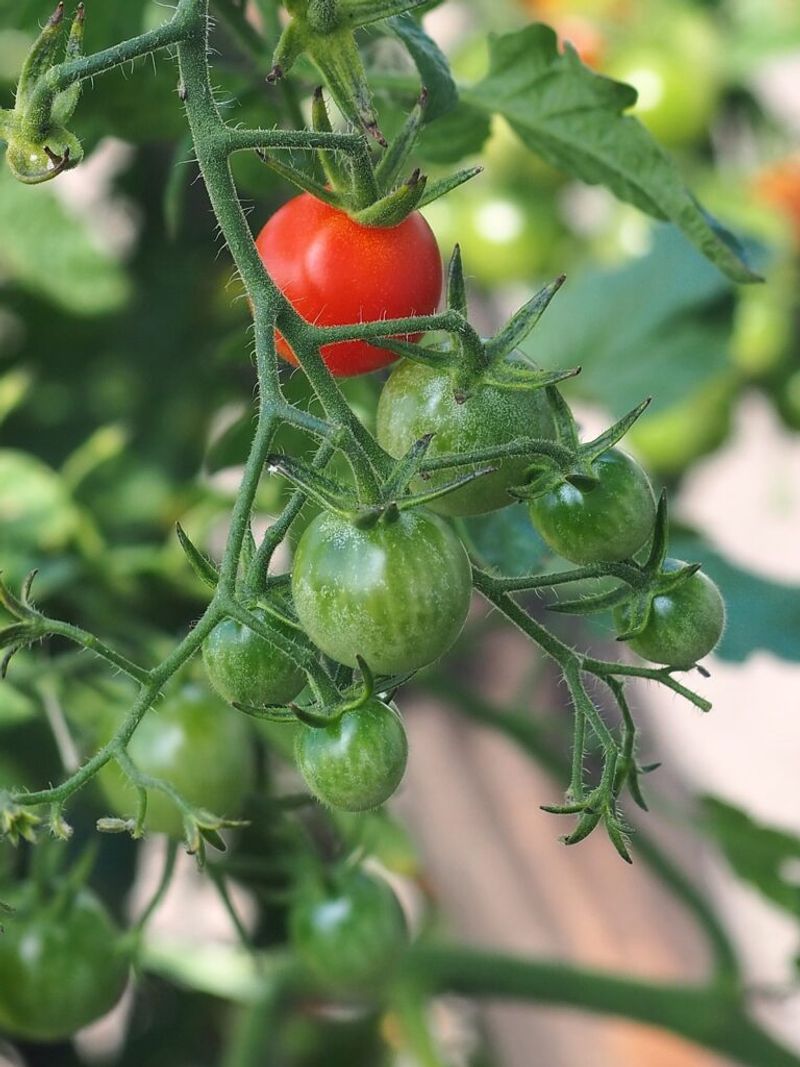Ohio gardeners face a persistent challenge with tomato blight, a destructive fungal disease that can wipe out entire crops in a matter of days. Our humid summers and variable spring weather create perfect conditions for both early and late blight to take hold in backyard gardens.
Knowing how to spot the first signs and respond quickly can mean the difference between a bountiful harvest and disappointing, diseased plants.
1. Dark Leaf Spots Signal Early Trouble
Brown or black spots on lower leaves often mark the first signs of early blight in Ohio gardens. These spots develop concentric rings that look like a bullseye target, eventually causing the leaf to yellow and die.
The disease typically starts after several days of warm, humid weather. Don’t confuse these distinctive target-like spots with normal leaf aging or nutrient deficiencies.
I’ve found that checking tomato plants after summer rainstorms helps catch these symptoms before they spread upward through the entire plant.
2. Stem Lesions Reveal Advanced Infection
Black or brown cankers on stems indicate the blight has progressed beyond the leaves. These sunken lesions often appear near the soil line first and can eventually girdle the stem, cutting off nutrient flow.
For Ohio gardeners, these symptoms become more common in July and August when humidity levels peak. The lesions may develop a velvety texture in wet conditions.
Carefully inspect the main stem weekly, especially after periods of rain followed by heat—conditions that cause blight to flourish in our region.
3. Fruit Rot Patterns Tell The Story
Infected tomatoes develop distinctive dark, leathery patches usually starting at the stem end. These spots expand into sunken areas with concentric rings, ruining the fruit even before it ripens.
Late blight causes greasy-looking, irregular brown patches that can appear overnight and quickly spread across the entire tomato. In my Ohio garden, I’ve noticed fruit symptoms intensify during August’s hot, muggy nights.
Examine tomatoes daily once they begin to form, removing any showing these telltale signs to prevent spores from spreading to healthy fruit.
4. White Fuzzy Growth In Wet Weather
A white, downy growth on leaf undersides signals late blight, particularly dangerous in Ohio’s unpredictable summer weather. This fuzzy mold appears during high humidity or after several rainy days.
The white growth produces millions of spores that spread rapidly throughout your garden. Morning is the best time to spot this symptom, before the sun dries the leaves.
Unlike powdery mildew (which appears as a white coating on leaf tops), this growth clings to the underside and indicates a much more serious condition requiring immediate action.
5. Rapid Plant Collapse Needs Fast Response
When tomato plants suddenly wilt and collapse despite adequate watering, late blight may have reached a critical stage. This dramatic decline can happen within 48 hours of infection under ideal conditions for the pathogen.
Ohio’s combination of warm days and cool nights in late summer creates perfect conditions for this devastating phase. Affected plants look like they’ve been hit by frost even in August heat.
I’ve saved neighboring plants by immediately removing and bagging collapsed ones, preventing the millions of spores from finding new hosts in my garden.
6. Copper Fungicide As First Defense
Organic copper fungicides provide effective protection when applied at the first sign of infection. Mix according to package directions and spray both leaf surfaces thoroughly, focusing on lower leaves where blight typically begins.
For Ohio gardens, application timing matters tremendously. Begin treatments when nighttime temperatures consistently stay above 50°F and humidity rises—usually mid-June in most parts of the state.
Reapply after rain or heavy dew, as moisture washes away protection. Remember that copper prevents spread but won’t cure already infected tissue, making early intervention crucial.
7. Strategic Pruning Saves Plants
Removing infected leaves and branches can halt blight’s progression when caught early. Use clean, sharp pruners and cut at least one inch below any visible symptoms, sanitizing tools between cuts with alcohol.
Morning pruning allows wounds to dry quickly, reducing new infection risks. Never prune when plants are wet, as this spreads spores throughout the garden.
After each Ohio rain shower, I check my tomatoes and immediately remove any suspicious leaves, which has saved many plants that would otherwise succumb to the spreading infection.
8. Mulch Barriers Block Soil Splash
Applying a thick organic mulch creates a protective barrier that prevents soil-borne blight spores from splashing onto lower leaves during Ohio’s frequent summer thunderstorms.
Straw mulch works exceptionally well, creating a clean, dry zone between soil and plant foliage. Black plastic mulch also helps by warming the soil, which can reduce some fungal activity.
Apply mulch after soil has warmed in late May, keeping it several inches away from stems to prevent collar rot. This simple step has dramatically reduced early blight in my garden.
9. Resistant Varieties Thrive Despite Pressure
Planting blight-resistant tomato varieties provides the simplest protection for Ohio gardeners. Look for varieties with letters ‘EB’ or ‘LB’ in their descriptions, indicating resistance to early or late blight.
‘Mountain Magic,’ ‘Defiant PhR,’ and ‘Iron Lady’ have performed consistently well even during challenging seasons. These varieties won’t guarantee complete immunity but significantly reduce infection severity.
For my central Ohio garden, ‘Mountain Magic’ has been the standout performer, producing abundant fruit even when neighboring varieties struggled with disease pressure.
10. Rotation Breaks Disease Cycles
Moving tomatoes to a different garden location each season disrupts the blight’s life cycle. Fungal spores overwinter in Ohio’s soil, ready to infect the next crop planted in the same spot.
A three-year rotation works best, meaning tomatoes (or their relatives like potatoes and peppers) shouldn’t return to the same bed until the fourth season. This practice starves out the pathogen by removing its preferred host.
In smaller gardens, even shifting plants to containers or raised beds can provide enough separation to reduce infection rates substantially.

